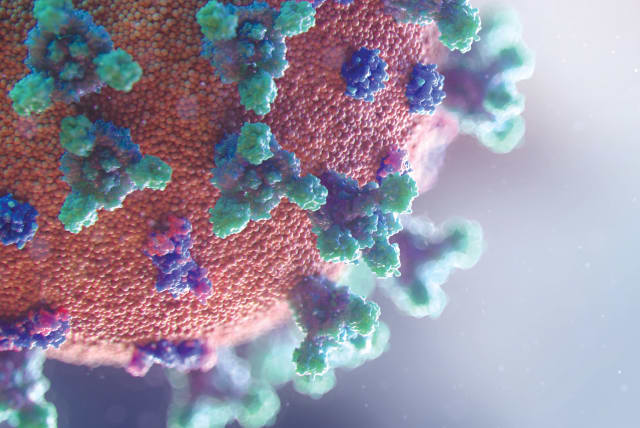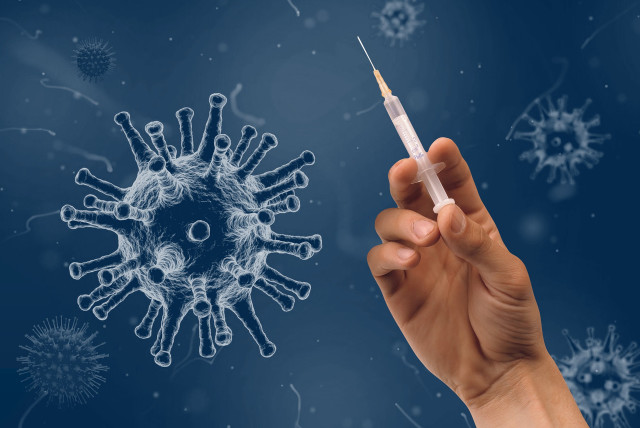Rare case of co-infection: Avian flu and COVID can lead to pneumonia

This case highlights the significance of accurate diagnosis and timely treatment for co-infections involving respiratory viruses.
Researchers have identified a rare case of co-infection involving H5N1 avian influenza and the severe acute respiratory syndrome coronavirus 2 (SARS-CoV-2), resulting in severe pneumonia. This discovery sheds light on simultaneous respiratory virus infections and underscores the importance of accurate diagnosis and timely treatment.
The case involves a 52-year-old woman from China who retired to a rural area. She experienced an ongoing fever lasting eight days, along with worsening shortness of breath and decreased blood pressure. Detailed lung scans, known as computed tomography (CT) scans, revealed significant abnormalities, indicating severe lung damage and inflammation.
Further investigation into the patient's medical history revealed that she had been in contact with sick poultry, suggesting that she contracted the H5N1 avian influenza virus directly from the infected birds. This highlights the transmission of H5N1 avian influenza from animals to humans.
In addition to the CT scans, scientists analyzed the patient's bronchoalveolar lavage fluid (BALF), a sample collected from the respiratory system. The analysis confirmed the simultaneous presence of both H5N1 avian influenza and SARS-CoV-2, reinforcing the severity of the co-infection and the challenges it posed for the patient's health.
The complexity of dealing with multiple respiratory viruses at once
Cases of co-infection involving H5N1 avian influenza and SARS-CoV-2 are extremely rare, with no previous reports documented in scientific literature. This finding underscores the complexity of dealing with multiple respiratory viruses at the same time and the need for vigilance and preventive measures when in contact with birds and poultry.
Diagnosing this co-infection presented challenges for medical professionals. Standard tests like throat swabs for polymerase chain reaction (PCR) testing were insufficient to accurately detect both H5N1 avian influenza and SARS-CoV-2. Therefore, scientists turned to analyzing the BALF, which proved critical due to the higher viral loads detected in this fluid.
Prompt and appropriate treatment played a crucial role in improving the patient's condition. She received targeted antiviral and anti-inflammatory medications tailored to address both the H5N1 avian influenza and SARS-CoV-2 infections. This resulted in a significant reduction in lung inflammation and a more favorable prognosis, highlighting the importance of early intervention and appropriate medical care in managing severe respiratory viral infections.
In conclusion, this case highlights the significance of accurate diagnosis and timely treatment for co-infections involving respiratory viruses. The patient exhibited a predominance of H5N1 avian influenza rather than COVID-19, underscoring the need for viral PCR analysis to identify the pathogen responsible for severe pneumonia.
The case also emphasizes the importance of preventive measures to minimize animal-to-human transmission, particularly when in contact with birds and poultry. Further research is necessary to deepen our understanding of co-infections and develop effective strategies to protect public health.
While these findings are significant, it is important to note that this study is currently undergoing peer review. Additional verification and analysis by the scientific community are necessary to confirm and expand upon these initial observations.
Jerusalem Post Store
`; document.getElementById("linkPremium").innerHTML = cont; var divWithLink = document.getElementById("premium-link"); if (divWithLink !== null && divWithLink !== 'undefined') { divWithLink.style.border = "solid 1px #cb0f3e"; divWithLink.style.textAlign = "center"; divWithLink.style.marginBottom = "15px"; divWithLink.style.marginTop = "15px"; divWithLink.style.width = "100%"; divWithLink.style.backgroundColor = "#122952"; divWithLink.style.color = "#ffffff"; divWithLink.style.lineHeight = "1.5"; } } (function (v, i) { });

